
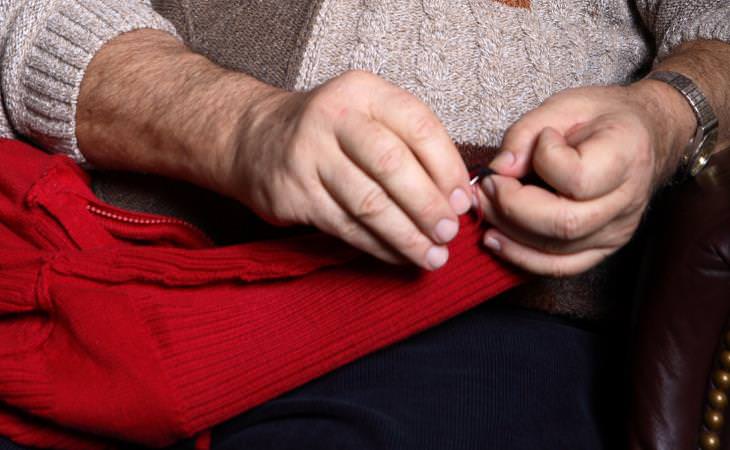
Darning a woven fabric:
Darning with a sewing machine:
Mending small holes in knits:
Pre-treatment in the case of moths:
If the holes in your garments were caused by moths, the first step will be to kill them, and then we can get to the mending. Put your garment in a sealed plastic bag and store it in the freezer for a few days. Take it out of the freezer and out of the bag and allow it to return to room temperature before storing it away again in a sealed plastic bag in the freezer. This will kill any possible larvae as well as bacteria and other kinds of pests.
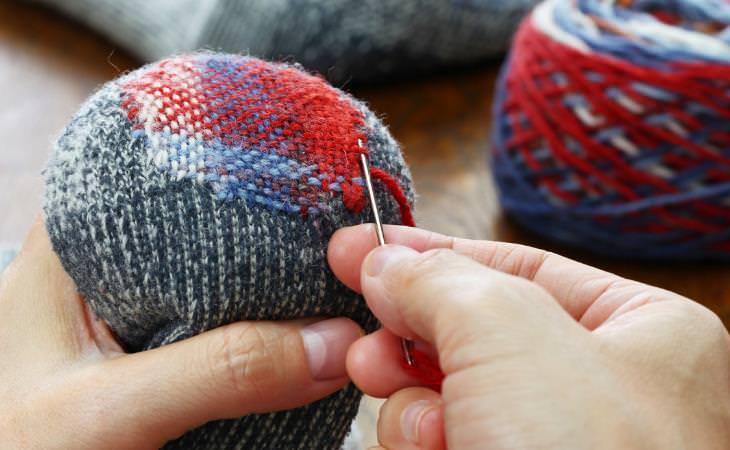
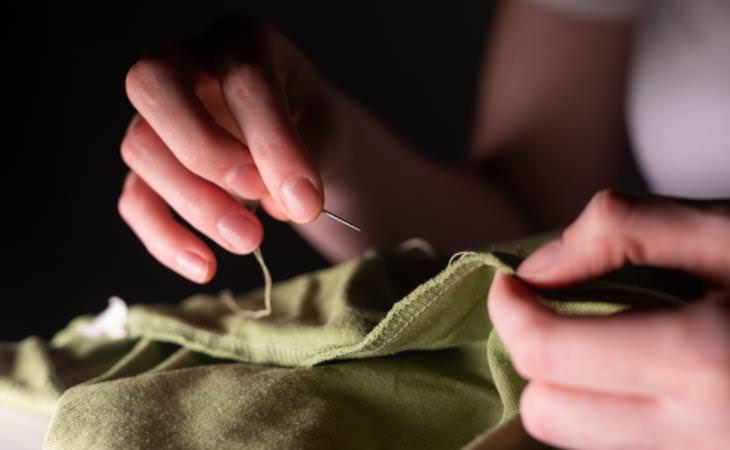
You can also use a patch, and simply iron it on.
For some fixes we can use a needle but not for stitching. For example, a snag or a loose thread. This video will show you a couple of methods:

These Guys Have Some WEIRD Choices in Christmas Sweaters!
Some people just have bizarre tastes when it comes to Christmas sweaters.
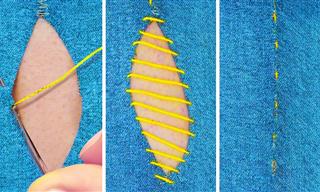 12:33
12:33
23 Clever Sewing Tips and Tricks to Make Your Life Easier
Take note of these cool and easy sewing hacks and crafts that can come in real handy for all of us.

Sweater Weather: Adorable Photos of Pets in Winter Attire
These 25 heart-melting photos are proof that the combination of pets and tiny winter clothing is the cutest thing you ever witnessed
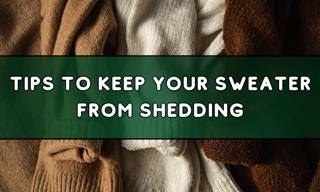
9 Tips to Keep Your Sweater from Shedding This Winter
Winter is almost here, and it’s time to protect your sweaters from shedding.

Are Your Windows Drafty? Here are 10 Solutions!
In this article, we will look at 10 common and less common solutions to those pesky drafty windows.
 5:04
5:04
These Life Hacks Will Take Good Care of Your Shoes
Whether you're a seasoned collector or just looking to extend the life of your favorite pair, these insights will transform how you care for your footwear.

The Mental Health Crisis Among People with Type 2 Diabetes
new research has uncovered a less visible but equally urgent crisis: mental health disorders are driving a substantial portion of hospital admissions among people with type 2 diabetes

Ever Hear of the 54321 Shopping Method to Buying Groceries?
Grocery shopping has become increasingly stressful as prices continue to climb. Many shoppers find themselves struggling to balance their budgets while still putting nutritious food on the table. But a straightforward shopping strategy is helping peo
 22:48
22:48
How to Pick the Right Frying Pan for Every Recipe
Upgrade your cooking skills instantly with this full guide to frying pans and saucepans, so that your cookware works with you, and not against you!

The ULTIMATE Guide for Using Foods for New Purposes
This guide will give you the useful tips and helpful information you need to find alternative uses for most of your common food products. You'll be amazed at the surprising uses for some of these common food items.

12 Passport Mistakes That Could Ruin Your Next Trip
Here are some passport mistakes you should never make to ensure your journey goes smoothly from start to finish.
 3:13
3:13
11 Great Ways to Use Plastic Hooks Around the House
11 ways to use plastic hooks to find creative solutions to household problems.
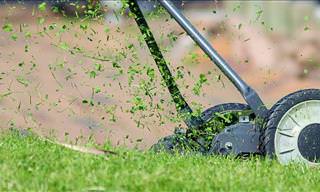
This Ultimate Lawn Guide Says Everything You Need to Mow
This lawn cutting guide will really help you get one up on the Joneses. Pretty soon your garden will be the talk of the town.

Great Dog Training Tips You'll Wish You Knew Before!
Here are 10 great training secrets that will make it easier for you to train your puppy. Take a look.

This Is Why You Should NOT Reboil Your Water!
It can be tempting to reboil water for your hot drinks. But when ordinary water is over boiled or reboiled, the chemical compounds change for the worse. Learn about it here.

Want to Know How to Read People's Minds? Read This!
Learn to read people's minds, by keeping an eye out for these body language signs.

12 Useful Tips That Help Solve Problems Around the House!
Want to skip the ironing? Have reusable grocery bags all over the place? With the following 12 tips, you can solve various problems in life ...
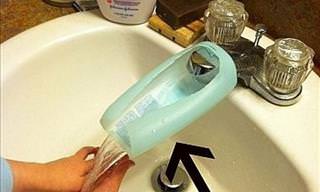
10 Fantastic DIY Tips Ideas for Kids You Have to Try
Whether you've a lot of time or just a little, there are some DIY tips here that will breathe new life into your child-grandparent relationship.

Find Out What Happens to Your Brain When You Complain
It turns out that complaining can have devastating effects on our brains, and after understanding why, you'll want to change your attitude.

I Bet You Never Realized How Useful Coffee Grounds Can Be!
Hold it! Don't throw away those old coffee grounds of yours - they have more uses than you can imagine. Read this post for 19 ways to use old coffee grounds.

Vicks Has So Many Different Uses. Here Are 8 of Them!
Vicks can be found in households across the globe. This is a very useful ointment which has many unique uses. Check some of them out here.

The Full Guide to Becoming a More Confident Person!
Confident people get what they want in life, and now you can too with these tips to help you strengthen your own self-confidence!

We’ve Got All The Tips And Tricks to Get Out Coffee Stains
These are some tips to help you clean coffee stains that can affect 10 different areas of your life but are easy to fix.
 12:03
12:03
The Best and Worst Canned Foods for Your Pantry
All you need to know about canned foods ever!

Here Are 12 of the Best Self-Help Books of All Time!
If you're looking for some great self-help books, you cannot go wrong with any of these!

12 Foods We Bet You Didn't Know Could be Microwaved
Do you think that your microwave is only good for heating frozen dinners? If so, you’re sorely mistaken! Use the following microwave hacks to soften sugar, froth milk, whip up some French toast, and more!

Pros & Cons of Cleaning Pods vs Powder vs Liquid
When choosing between liquid detergent, powdered detergent and single dose pods, there are a few things you should consider.

The Secret Meaning Behind Bread Packaging Twist Ties
Did you know that the color of twist ties on bread packaging changes from loaf to loaf? This trick will help you pick the freshest bread at the store.
 12:24
12:24
Grow Your Own Ginger Indoors With This Easy Hack
Want to grow some ginger at home? It's easier than you think.

Rice Water - 6 Unexpected but Super Helpful Uses
After reading this article, you will never throw away rice water again.

10 Smart Ways to Treat Your Dry Skin!
Suffer from dry skin? You can find these next natural dry skin treating ingredients right in your home...

Dried vs. Canned Beans: Which Is the Better Option?
Can't decide between dried and baked beans? Here, we'll compare the two varieties and help you decide which option best suits your needs.

Incredibly Interesting Facts and Figures About the World
These facts and figures about the world are the most interesting you have ever read.

7 Scented Flowers for a Sweet Smelling Home
Opt for these beautifully scented flowers as opposed to air fresheners or candles for a better smelling home.

Learn to Dance All the Popular Dances In One Place...
Get your first beginners friendly dancing lessons in 10 genres, starting from the aristocratic waltz and ending with some fun disco moves...

Quick Grow: Eight Flowers that Will Bloom in 60 Days
We have 8 recommendations for flowers that will grow faster than others.

Amazing! Who Knew Butter Could Solve So Many Problems?
The solution to the many problems we have at home is found in your fridge. Check out what butter can solve!
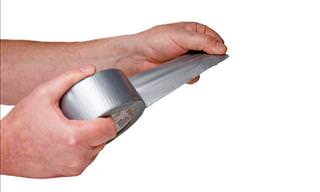 4:40
4:40
This Is What Makes Duct Tape So Strong! Impressive
This is why duct tape is so strong!
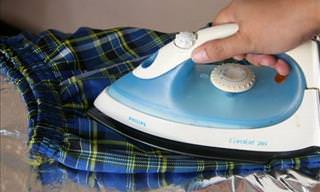
Tips That Prove Aluminum Foil Isn't Just for the Kitchen!
There are numerous uses for aluminium foil outside the kitchen that most of us never knew to be possible. Take a look for yourself.

9 Ultimate Methods for Stain Removal around the House
Things we;ve had for a long time tend to lose their fresh-out-the-box look but this can be remedied! These methods will help you remove those stubborn stains!

8 Things That'll Only Make a Stain Worse
This comprehensive guide will walk you through the dos and don'ts of stain removal, helping you keep your belongings looking their best.

The Ultimate Guide to All Things Nuts
hether you're a snacker, a cook, or just curious, you'll find plenty of reasons to make these versatile treats a staple in your pantry.
 8:03
8:03
Hidden Features in Everyday Objects We Bet You Don’t Know
Do you know why toothbrushes have blue bristles? Or why notebooks have margins? Learn about the secret practical features of 30 everyday objects.

Relieve Itching With These 7 Useful Natural Tips
Here's a look at a few great home remedies that can work wonders to calm itchy skin.

Try These Methods If You Happen to Sweat Excessively
Excessive sweating can be an embarrassing problem, but luckily, there are many different methods to use in order to halt it in its tracks. Discover them here.

Why These 8 Purchases Shouldn't Be on Installments
Using "Buy Now, Pay Later" services may not such a good idea for these items.
 1:03
1:03
Never Leave Water Bottles in Your Car.. Here's Why!
There are a lot of things that we know shouldn't be left in the car, but you probably never thought that this item could cause such harm!

15 Seniors Who Still Know How to School Us in Life
These elders have some interesting advice to share...

10 Creative Ways to Sneak More Walking Into Your Day
Finding a designated time for walking and exercise can be difficult. Luckily, there are many creative and fun ways to sneak extra steps into your routine!
To enable your Ad-Free Subscription, please fill the fields below
Your subscription was successful, now you can enjoy an ad-free experience!! Note: To make sure you get no ads, please make sure to log in to your account. If you are logged in already, then refresh the page. The subscription can be cancelled at any time.


